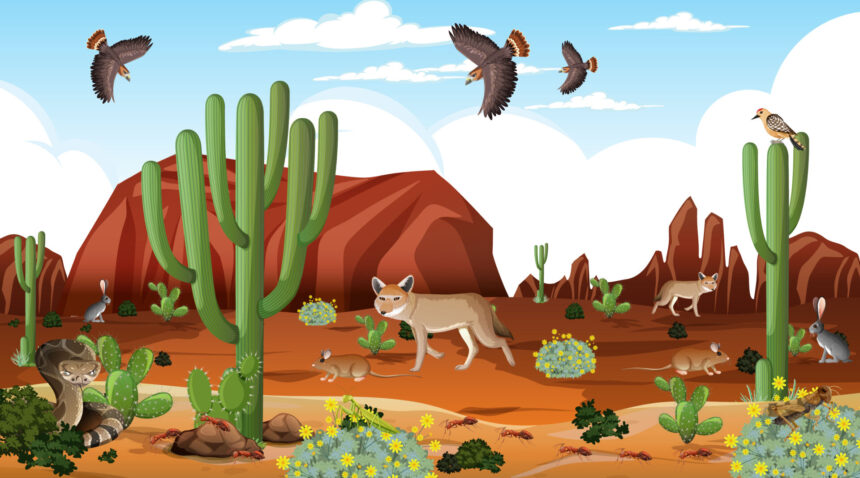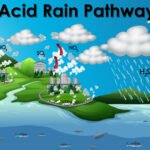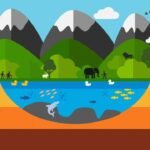Have you ever wondered how anything survives in the desert’s extremes? The desert food web holds the answer – a delicate balance of predators, prey, and ingenious adaptations that defy all expectations.
⫸ Introduction to Desert Ecosystems
Defining a desert: More than just sand
- Deserts are defined by a lack of rainfall, receiving less than 10 inches of precipitation per year.
- They can be hot (like the Sahara) or cold (like the Gobi).
- Deserts can have sand dunes, rocky plains, or even ice and snow!
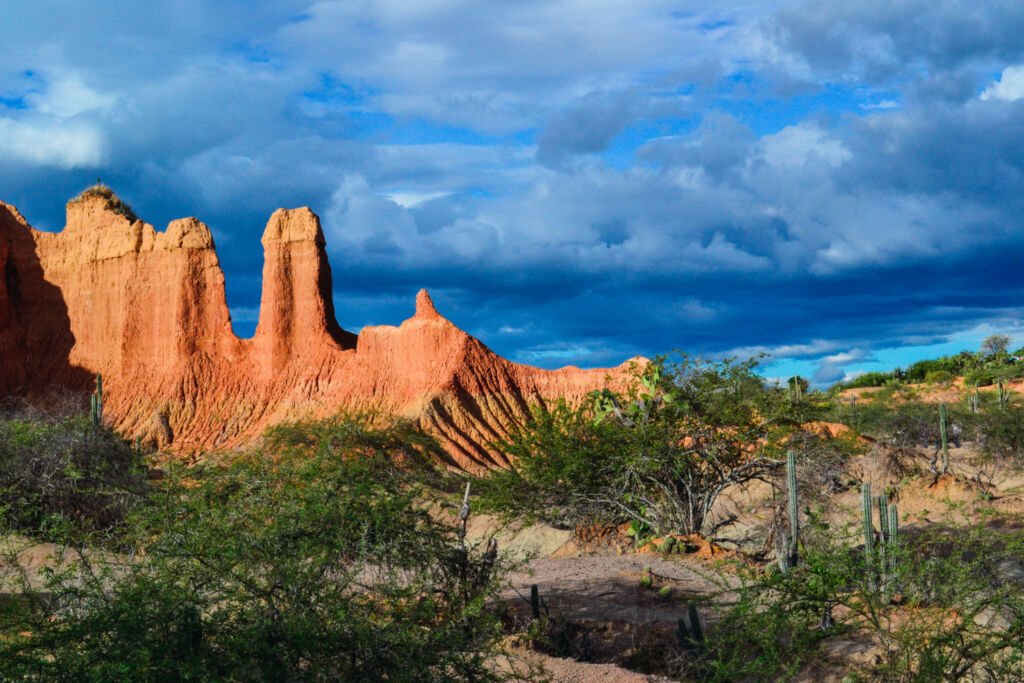
Challenges of desert life: Extreme temperatures, water scarcity
- Sweltering heat during the day and frigid temperatures at night create a harsh environment
- Finding and conserving water is the top priority for desert species.
Unique adaptations of desert species
- Desert life has evolved ingenious ways to cope with the challenges of their environment. These adaptations are crucial links in the desert food web.
- Examples: Camels store water, cacti have spines instead of leaves, and some animals get moisture solely from their food.
⫸ Producers: The Foundation of the Desert Food Web
Images of barren sand dunes likely come to mind when you think of the desert. Yet, even in this unforgiving landscape, life finds a way. The desert food web starts with the producers, those extraordinary plants that turn sunlight into the energy that fuels the ecosystem.
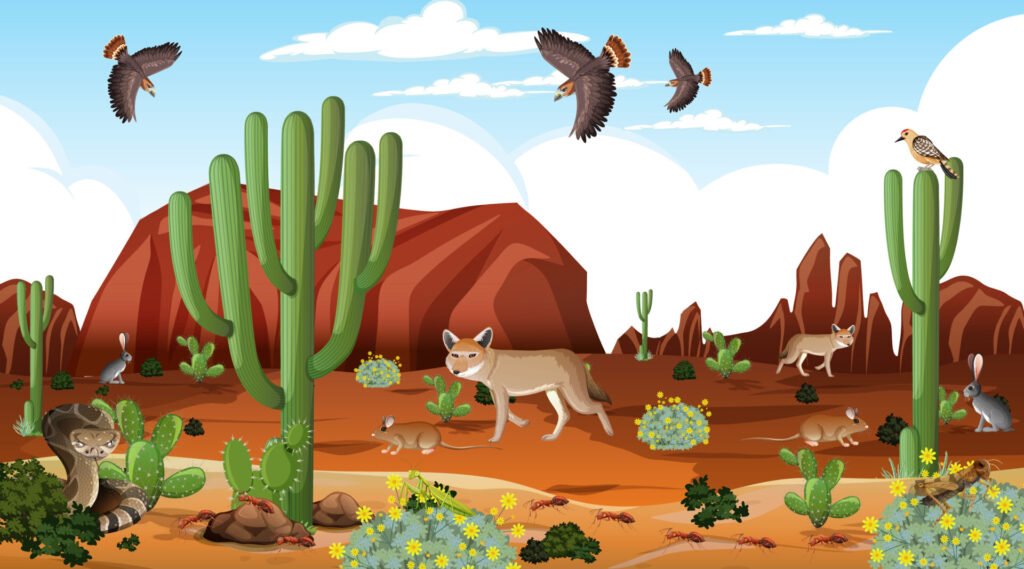
Cacti and Succulents
- Adaptations for water storage: Cacti, those iconic desert dwellers, have thick, fleshy stems to store precious water. Spines replace leaves, minimizing water loss through evaporation.
- Role as a food source for primary consumers: Despite their defenses, cacti are vital for animals like desert tortoises and javelinas, who munch on their water-rich flesh.
Drought-Resistant Shrubs and Grasses
- Survival mechanisms in low-water environments: These hardy plants have deep root systems to tap into hidden water reserves or tiny, waxy leaves to reduce moisture loss.
- Food source for insects and small mammals: Shrubs and grasses provide seeds for rodents and foliage that sustains insects and grazing animals.
Desert Wildflowers
- Brief flowering periods and role in the food chain: After scarce rains, the desert explodes in color. Wildflowers have short lifecycles and rapidly produce seeds, a feast for insects and birds.
- Importance as a nectar source for pollinators: Their blooms attract beetles, butterflies, and even hummingbirds, vital for plant reproduction in the desert.
The Role of Detritus
- Breakdown of organic matter: Bacteria and fungi break down dead leaves, animal droppings, and other debris.
- Nutrient source for plants and soil organisms: These nutrients are recycled back into the soil, fueling the growth of new plants.
Importance of Photosynthesis in Harsh Environments
Photosynthesis is the lifeblood of the desert food web. Even with adaptations, plants face immense challenges in the intense sunlight and dry air. They’ve evolved specialized forms of photosynthesis to maximize efficiency and minimize water loss, ensuring energy flow through the desert ecosystem.
⫸ The Primary Consumers: Desert Herbivores
When you hear “desert animals,” you think of scorpions and snakes, right? But the desert food web depends heavily on its plant-eaters—the primary consumers. Let’s dive into the fascinating world of desert herbivores!
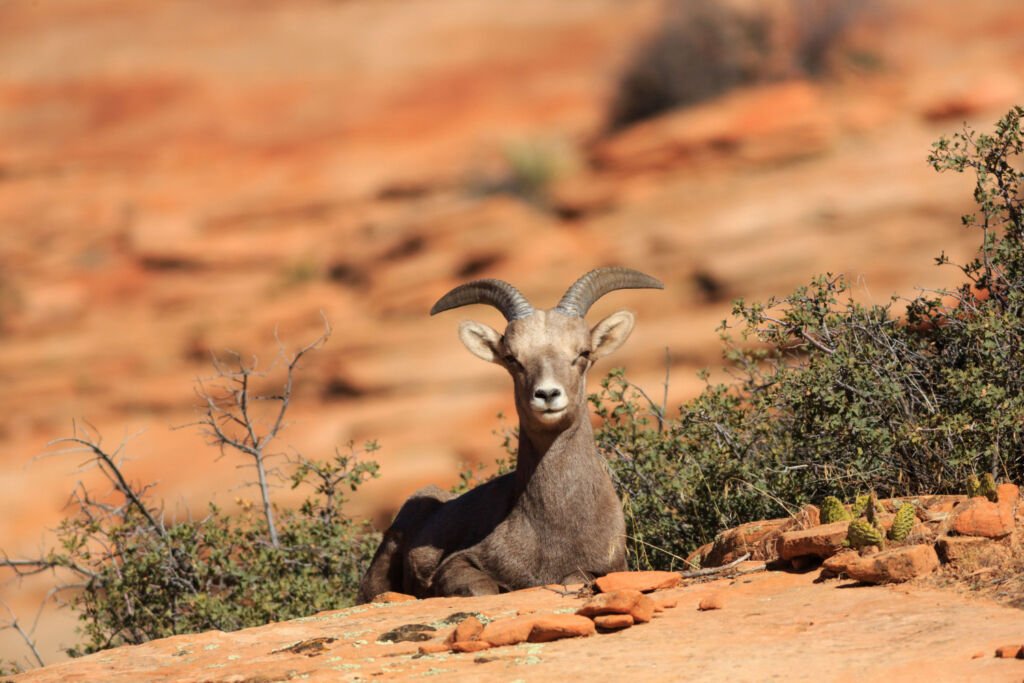
Desert Insects
- Adaptations for finding and consuming food: Desert insects have specialized mouthparts to eat tough leaves, suck nectar, or even harvest plant sap. Some are camouflaged to blend into their environment.
- Diverse roles as plant eaters, pollinators, and detritivores: They are essential pollinators, eat decaying matter, and are a vital food source for other desert creatures.
Desert Rodents
- Seed-eating specialists and their adaptations: Desert rodents have cheek pouches for storing seeds and powerful kidneys to conserve water. They often burrow to escape the heat.
- Key prey for desert predators: These small creatures form the backbone of the desert food web, providing sustenance for snakes, owls, and other predators.
Desert Reptiles
- Plant-eating reptiles like tortoises and iguanas: These slow-moving reptiles munch on leaves, flowers, and cacti, obtaining much of their water from food.
- Their importance in the food chain: Lizards and tortoises are essential prey items and help disperse seeds, shaping the desert’s vegetation.
Adaptations for surviving on plant-based diets
- Specialized digestive systems: Herbivores have evolved to extract maximum nutrients from tough, fibrous plants. Some have symbiotic bacteria to assist with digestion.
- Low metabolic rates: Desert herbivores often have a slow metabolism to conserve energy and reduce their need for water.
- Behavioral adaptations: They may be active only at night or burrow to find cooler temperatures and reduce water loss.
⫸ The Secondary Consumers: Predators of the Desert
The desert food web teems with skilled predators—masters of survival who ensure the ecosystem stays in check.
Snakes
- Ambush predators and their hunting strategies: Sidewinder rattlesnakes lie in wait, their camouflage blending seamlessly with the sand. With lightning speed, they strike unsuspecting rodents, injecting potent venom.
- Key role in regulating rodent populations: Snakes are essential for controlling desert rodents. Without them, rodents could overpopulate, devastating plant life and throwing the entire food web off balance.
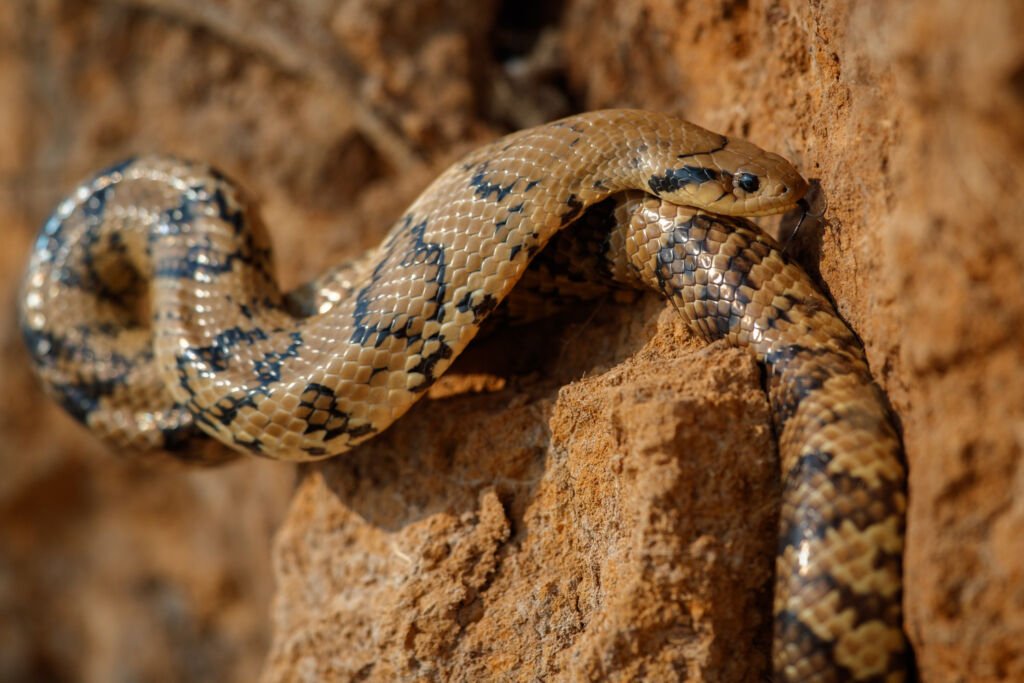
Birds of Prey
- Owls, hawks, and other raptors: Owls use their silent flight and exceptional hearing to locate prey under the cover of darkness. Hawks and eagles soar above, their sharp eyesight spotting even the smallest movement on the desert floor.
- Specialized hunting techniques for desert prey: Raptors have evolved sharp talons and hooked beaks to capture and tear into their prey, perfectly adapted for life in the desert.
Carnivorous Mammals
- Coyotes, foxes, and their opportunistic feeding habits: These cunning canids are adaptable hunters and scavengers. They’ll eat anything from insects and snakes to carrion, adjusting their diet depending on what’s available.
- Scavenging behavior and adaptations to desert life: Their keen sense of smell helps them locate carcasses, and their ability to go long without water is a major desert advantage.

The role of predators in maintaining ecosystem balance
- Predators might seem cruel, but they are vital in the desert food web. Keeping herbivore populations in check prevents overgrazing and protects plant diversity.
- They also help maintain healthy prey populations by targeting weaker or sick individuals.
- Removing predators can disrupt the delicate balance, leading to cascading effects throughout the desert ecosystem.
⫸ Scavengers and Decomposers: Cleaning Up the Desert
Vultures and Other Scavengers
- Specialized birds for finding and consuming carrion: Vultures are nature’s garbage disposals with incredible eyesight and a keen sense of smell. They soar effortlessly, scanning vast landscapes for carcasses.
- Role in preventing disease spread: By quickly consuming dead animals, these scavengers play a crucial role in limiting the spread of disease and maintaining a healthy desert ecosystem.
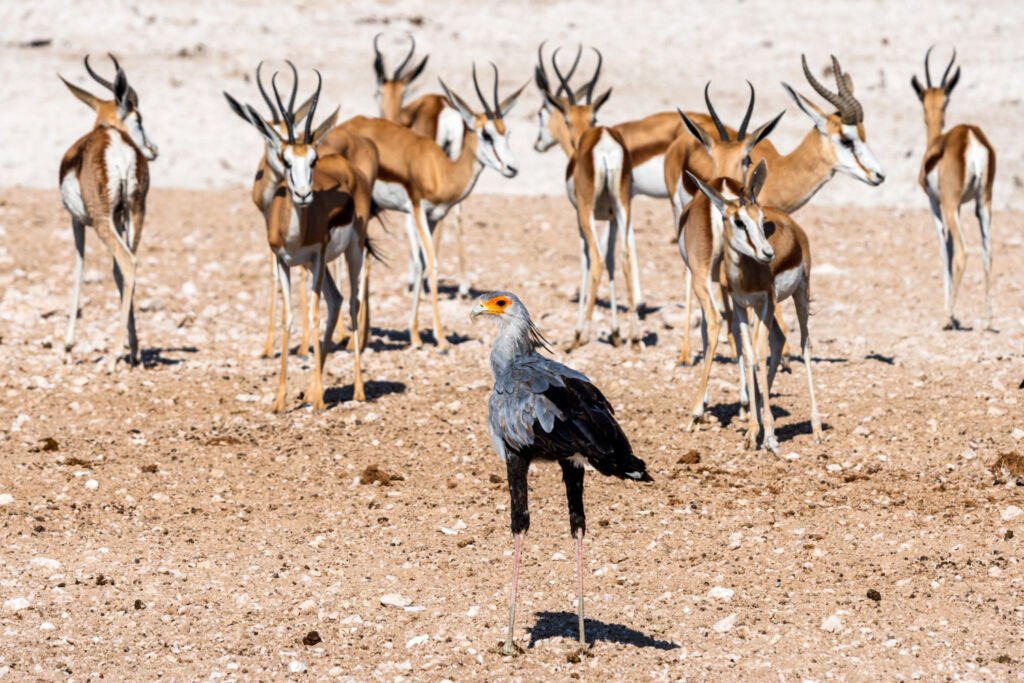
Insects and beetles
- Breaking down waste: Insects like flies and beetles and their larvae act as tiny recyclers. They feast on decaying animal matter and plant material, breaking them into smaller pieces.
Microbes and Fungi
- Breaking down organic matter into nutrients: Bacteria and fungi are the ultimate decomposers. Invisible to the naked eye, they work tirelessly to transform dead organic matter into essential nutrients.
- Essential for soil health and nutrient cycling: These nutrients are returned to the desert soil, enriching it and supporting plant growth, which fuels the entire desert food web.
The Importance of Nutrient Cycling
The desert ecosystem is delicately balanced; scavengers and decomposers help maintain this balance by cycling vital nutrients. Without them, carcasses would pile up, disease would spread, and the desert soil would deplete. These unassuming creatures ensure energy and nutrient flow through the desert food web, sustaining life even in harsh conditions
⫸ The Interconnectedness of the Desert Food Web
A single tug on one strand sends ripples through the entire system. This interconnectedness makes the desert ecosystem surprisingly resilient but also incredibly fragile.
Food chains vs. food webs
- Food Chains: A simple, linear path of energy transfer. Example: Cactus → Desert Mouse → Snake → Hawk.
- Food Webs: A complex network of interconnected food chains showing the many feeding relationships within an ecosystem.
- Why are food webs important? They demonstrate the interconnectedness of species. A change in one population impacts the entire web and the energy flow within, highlighting the delicate balance of the desert ecosystem.
Examples of energy flow in the desert
- Cactus → Desert Tortoise → Coyote: The tortoise gets energy from the cactus, and if a coyote eats the tortoise, it receives a portion of that stored energy.
- Ephemeral plant → Grasshopper → Sidewinder Snake → Hawk: A short-lived desert plant provides sustenance for a grasshopper, which is eaten by a snake, which itself becomes prey for a hawk.
- Dead Animal → Vulture → Beetles → Microorganisms: Scavengers and decomposers form their complex food web, recycling nutrients into the ecosystem.
Important to Note
- Changes in one population can have cascading effects (e.g., a decline in cacti will impact all the animals that rely on them).
- Keystone species (like certain rodents or predators) have a disproportionately large impact on the stability of the desert food web.
⫸ The Delicate Balance of the Desert Food Web
Imagine the desert food web as a fragile tapestry, each thread representing a species. Remove one thread, and the entire structure weakens. Natural forces and, increasingly, human activities constantly challenge this delicate balance.
Threats to the Desert Food Web
- Human development and habitat fragmentation: Expanding cities, roads, and agriculture break up desert habitats. This isolates populations, making it harder for animals to find food, mates, and safe shelter.
- Climate change and water scarcity: Higher temperatures and changing rainfall patterns disrupt plant growth, which ripples throughout the food web. Water sources dry up, leaving animals thirsty and vulnerable.
Conservation Efforts
- Protecting desert habitats and species: Creating protected areas and wildlife corridors helps maintain healthy populations and interconnectedness within the desert food web.
- Maintaining biodiversity is important. Each species plays a role. Preserving biodiversity ensures the desert ecosystem remains resilient and less vulnerable to collapse.
The Impact of Keystone Species
Keystone species are crucial to the overall health of the desert food web. For example, desert tortoises dig burrows that provide shelter for other species. Their loss can have cascading effects on the entire ecosystem. Protecting keystone species is essential for preserving the balance of the desert.
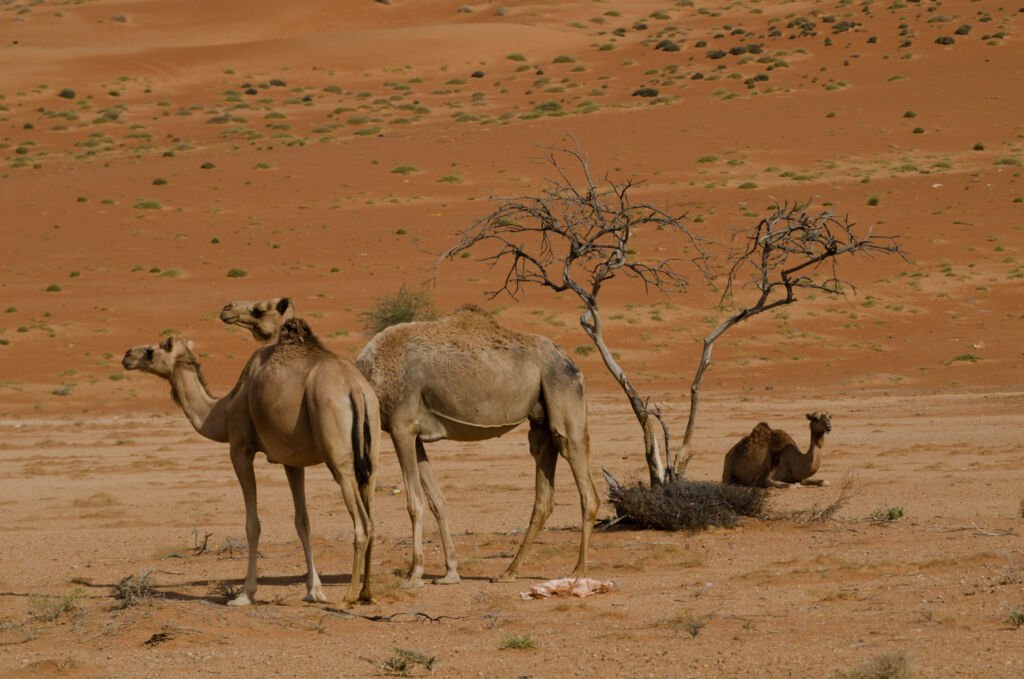
⫸ Conclusion
From the water-storing cacti to the opportunistic predators, the desert food web reveals an interconnected system where survival depends on remarkable adaptations. Each organism, from the smallest insects to the top predators, plays a crucial role in maintaining the delicate balance of this arid ecosystem.
The desert food web teaches us the true power of adaptation. Plants that store water, animals that hunt at night, and scavengers that recycle every scrap of energy – these strategies showcase the incredible ingenuity of life in the face of extreme hardship. Witnessing the desert food web inspires awe and reminds us of nature’s boundless resilience.


